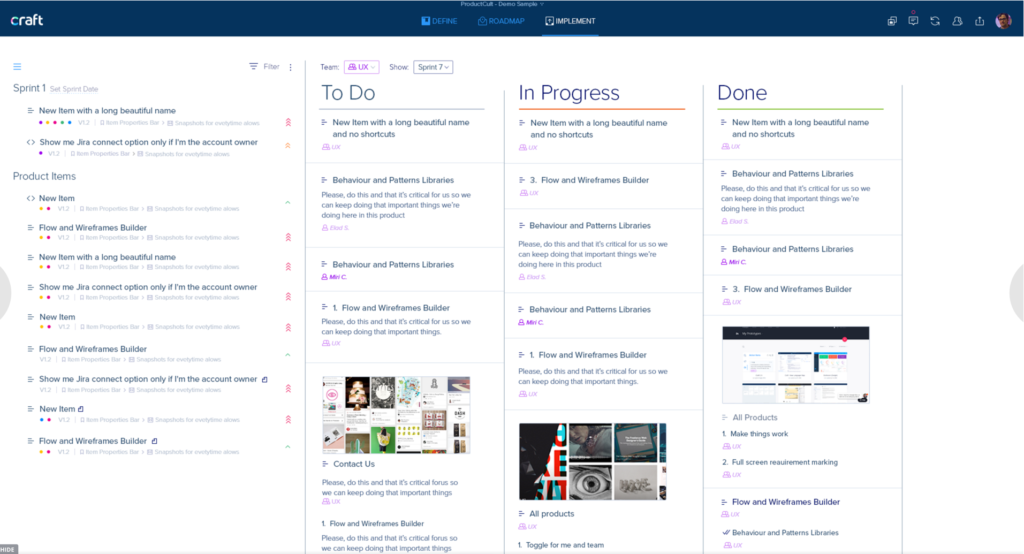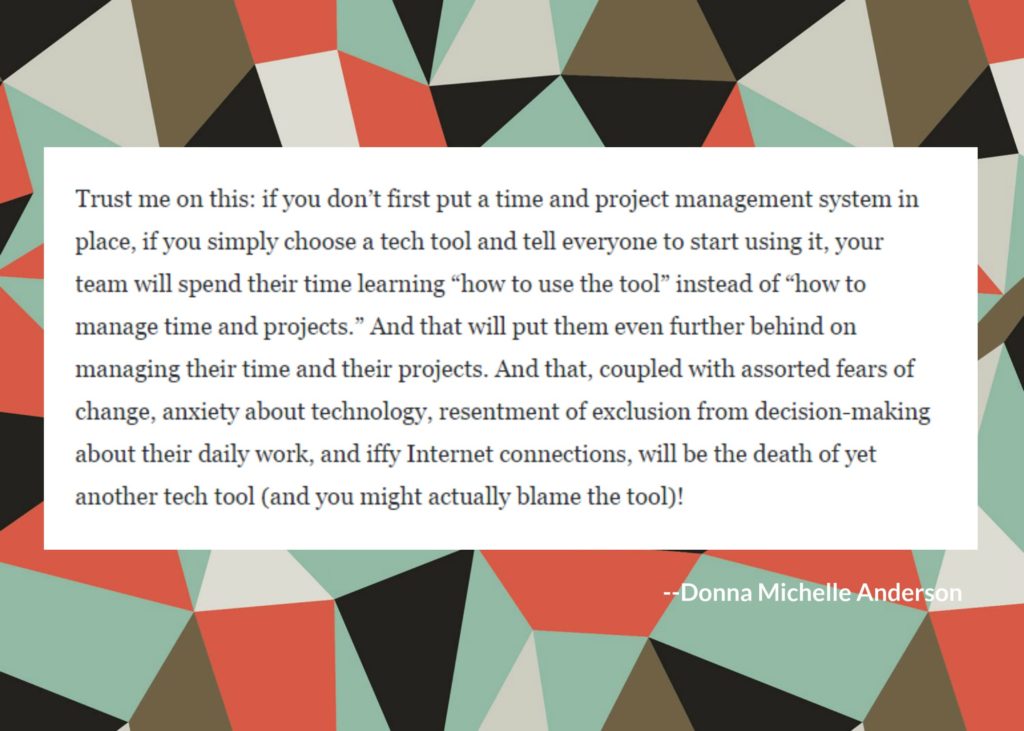Home > Blog > Optimizing Workflow Management for Agile Teams in 5 Steps
Optimizing Workflow Management for Agile Teams in 5 Steps

One of the greatest challenges product managers encounter in agile team work is managing the process. Managing an agile product team’s workflow borders on alchemy – it is part accurate science, part powerful technology and part hard-earned experience seasoned with gut feeling a knack for reading people.
I’ve known product managers who believe the right technology can solve all the workflow issues, and I’ve met PMs who spend 40% or more of their work hours trying to channel the process in the right direction with endless meetings.
The ultimate workflow doesn’t exist. It is an ongoing work in progress, which we constantly try to better and improve. That said, agile product teams should strive to find a balance between automation, conversation and flexible improvisation allowed for individuals on the team.
Step 1: Start by analyzing the existing workflow
There are several approaches to this step, which include a full day’s all-team session with a whiteboard, which very few people are known to have survived unscathed. Personally, I prefer the solid approach: interviewing each team member, starting with yourself.

Priceless Tip #1: Get your project manager to join you for the interviews.
Project managers are the single most valuable resource for this journey, both because they are normally involved in the process and because they naturally employ a very structured, systemic way of viewing things and will undoubtedly have insightful input. More importantly – they will force you to confront even the most nitty-gritty bits and tangles.
Mapping your existing workflow should be easier than you think: approach it like you would a roadmap or user story. You can even use the same tools (stickit or your resident roadmapping software or project management app).
Priceless Tip #2: Getting your team on board with this process is critical to its success.
The less confident members of your team may consider this step to be a challenge of their independence or an examination of their judgement. It is not, and you should make that abundantly clear. It is merely a map-making process in the optimization journey that you are all making together.
Step 2: Taking stock of existing workflow management tools
The workflow mapping process needs to include all the workflow management software tools your team uses. Make a list, by broad categories. It should look something like this:

After you have an organized list, get a rough assumption of all the software cost. Then make an estimate of the time invested in integrating the data and getting the information on everything synced. It can be ridiculously wild and general. For example:
Every time I create a google doc, I spend about 2 minutes fiddling with the sharing settings, to make sure that everyone on the team has access to the document but no one on the outside can see it. Then I share it and add a note, to make sure everyone who is relevant gets it (another 5 minutes). Then I share it on Slack, just to make sure (another few minutes). Our team creates about 5 documents a week. That amounts to about 1 hour of work a week.
My conclusion after heading several workflow management optimization journeys: most of the tools the team cumulated sporadically over time are free, but that doesn’t justify keeping them. However, team members tend to get attached to their tools and helping them change habits can be a great challenge, but we’ll get to that soon.
Step 3: Creating an optimal, intelligent work process
You’ll be surprised to discover how many kinks can be ironed during the interview stage. Work processes are often shaped by the path of least resistance, but that does NOT necessarily mean the outcome is optimal in terms of time, energy investment and collaboration.
There are quite a few aspects that need to be addressed during workflow optimization. It is helpful to group them into buckets and go from there, if only for the sake of convenient order. Here it is, in a nutshell:
- Who Does What When – find bottlenecks, identify weak links, solidify the process and make each step (and the logic behind it) abundantly clear
- How Long Does Everything Take – define clear guidelines for realistic time-frames of every common task/work segment
- Collaboration and Documentation – standardize and centralize channels of communication
- Technology – invest in the most suitable software that meets your teams’ needs
Priceless Tip #3: Mind the Personal Element
We’re all grown ups about teamwork and professionalism, but you can’t ignore the fact the occasional bottleneck that is created by two team members simply not getting along. Personally, I prefer not to get in the middle. Here’s what you should do: acknowledge the existence of friction briefly. That’s it. Acknowledgement in itself is usually enough to get team members to remember they are in a professional environment that requires them to rise above when someone rubs them the wrong way.

Step 4: Choosing the right workflow management software
Over time I’ve come to realize team members and sub-teams find their way to tools through a number of factors:
- Helpful/must have features
- Technology they are familiar with
- Technology they are comfortable with
- Random initial channel of communication between two people
You’ll notice I used the term “find their way” and not “choose”, because more often than not people default to tools they already know in a manner than hardly ever involves rational, pro-active decision-making. That’s where workflow optimization comes in.
The decision-making process for selecting the right workflow management software for agile teams is fairly straightforward:
- On your “existing software” spreadsheet, highlight the tools that give you the most value, as a team.
- Go over your team’s requirements and make a list of absolutely vital needs (e.g.: wireframe for UX; flexible and editable notes for storymapping, etc.)
- Next, turn your list upside down: make a shortlist of the tools you are considering (including ones currently in use) and list which ones cover which features. The trick here is to try to reach beyond the features you know, to the features that are currently not in use, because nobody knows they’re there.
- Now choose.

The decision should be easy, because you should be going for the workflow management software tools with the most features relevant to your team’s needs. In a perfect world, we would be working on a single platform that can sync, collaborate, roadmap, bill clients, make coffee and arrange car pools.
At Craft, our second best option isn’t that far behind – Craft actually knows how to turn story maps to roadmaps, ideate and prioritize requirements and manage tasks and workflows for agile teams. We don’t need to hop from app to app to communicate and tasks can be assigned to teams, not just individuals.
Priceless Tip #4 “Fire” tools by the amount of unused features
You’ll be amazed by how many features most users overlook in most software tools. So much so, in fact, that we might find ourselves using 3 different tools instead of 1, simply out of habit or obliviousness. It’s time to cut down the number of tools circulating in our teams – if your team uses less than 50% of a product’s features, you’re probably better off eliminating it and focusing on software that is more sustainable for your needs.
Step 5: Getting down to business – Implementation
What you need to understand before launching workflow changes is that while you can’t please everybody, you still need everyone to be positive about this change. Reality is painful: people don’t like change. Not even tech-savvy digital adventurers like your team. They like their comfort zones and their habits and if you’re take that away, be prepared to campaign for the new stuff.
Donna Michelle Anderson makes a great point on how the tools are just that: tools that are meant to improve productivity and streamline the work, and not a goal themselves.

If you go back and read the article over again, you’ll notice the importance and consistent reminder to include your team in the discussions in every single step along the way. The main thing that will achieve is to streamline the implementation stage. If your team feel part of the process, they will be much more inclined to cooperate with the outcome.
The best approach for healthy implementation is to track and monitor the changes, at least for a short while. During stand up meetings, in one-on-one meetings and through usage reports of the new tools (that’s what they’re there for).
BONUS: learn how to be succesful Product Marketing Manager from our guide

